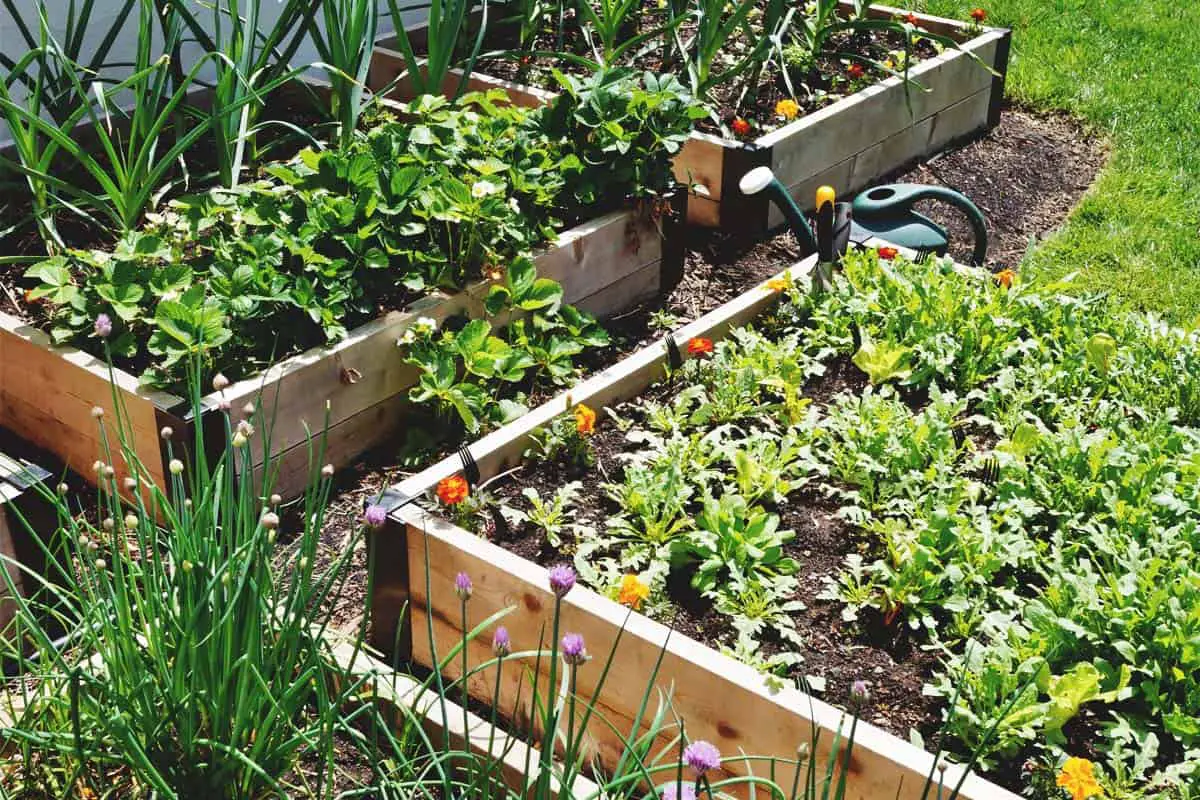In this article, we will explore the topic of ensuring proper drainage in raised garden beds. We will discuss the importance of drainage in gardening and address the question of whether raised garden beds drain well. By the end, you will have a guide to help you create the optimal drainage system for your raised garden beds, ensuring healthy and thriving plants.
Introduction
Gardening is a fulfilling and rewarding hobby that allows you to connect with nature and grow your own plants and vegetables. One popular method of gardening is using raised garden beds, which provide numerous benefits such as better soil quality, easier access, and improved plant growth. However, one crucial aspect of successful gardening in raised beds is proper drainage. In this guide, we will explore why proper drainage is important, factors that affect drainage, tips for improving drainage, and common mistakes to avoid. By following these techniques, you can ensure healthy plant growth and successful gardening in your raised beds.
Why Proper Drainage is Important in Raised Garden Beds
Preventing Waterlogged Soil
Waterlogged soil can be detrimental to plant health as it deprives the roots of oxygen and encourages the growth of harmful bacteria and fungi. Raised garden beds with proper drainage allow excess water to drain away, preventing waterlogged soil and ensuring the optimal moisture level for plant growth. By maintaining good drainage, you can provide a healthy environment for your plants and reduce the risk of root rot and other water-related diseases.
Promoting Healthy Root Growth
An essential aspect of plant health is the development of strong and healthy roots. Proper drainage in raised garden beds allows the roots to penetrate deep into the soil, accessing necessary nutrients and water. When the soil is well-drained, roots can grow more easily, promoting strong root development, and enabling plants to withstand adverse conditions such as drought or heavy rainfall.
Preventing Disease and Root Rot
Waterlogged soil can create a favorable environment for the growth of disease-causing pathogens and root rot. Poorly-drained beds can lead to root suffocation and the accumulation of excess moisture, resulting in root rot and the decline of plant health. By ensuring proper drainage in your raised garden beds, you can prevent the occurrence of these issues and maintain the overall health and vitality of your plants.
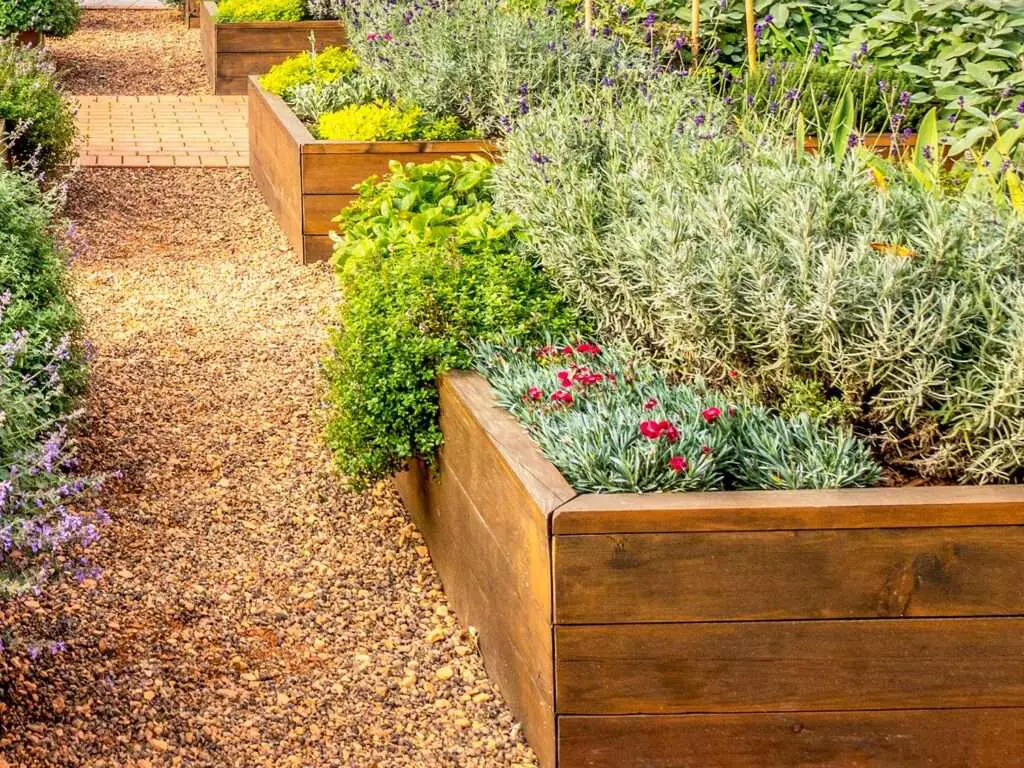
Factors that Affect Drainage in Raised Garden Beds
Soil Composition
The composition of the soil in your raised garden beds plays a crucial role in determining drainage. Different types of soil have varying drainage capacities. Sandy soil, for example, drains quickly, while clay soil tends to retain water. It is essential to understand the soil composition in your garden beds to determine the appropriate measures for improving drainage.
Bed Construction
The construction of your raised garden beds can significantly impact drainage. Beds constructed with solid bottoms and no drainage holes can hinder water from escaping, leading to waterlogged soil. On the other hand, beds constructed with adequate drainage systems allow excess water to flow out and maintain proper moisture balance. Proper bed construction is essential for ensuring optimal drainage in your raised garden beds.
Bed Height
The height of your raised garden beds can also affect drainage. Beds that are too shallow may not allow for sufficient drainage, resulting in waterlogged soil. Conversely, beds that are too deep may promote excessive drainage, causing the soil to become too dry. Finding the right balance and determining the ideal bed height for your specific gardening needs is essential for proper drainage.
Testing and Improving Drainage in Raised Garden Beds
Percolation Test
To determine the drainage capabilities of your raised garden beds, you can perform a simple percolation test. Dig a hole about 1 foot deep and wide in one corner of the bed. Fill it with water and observe how long it takes for the water to drain completely. If the water takes more than 24 hours to drain, it indicates poor drainage. In such cases, you can take appropriate measures to improve drainage.
Amending Soil
Amending the soil in your raised garden beds is an effective way to improve drainage. For heavy clay soils, incorporating organic matter such as compost or well-rotted manure can help break up the compacted soil and create channels for water to drain through. It also improves soil structure and nutrient availability for plants. Adding sand or perlite to sandy soils can enhance their drainage capabilities. By amending the soil, you can create a more balanced and well-drained growing environment.
Installing Drainage Systems
In cases where poor drainage persists, installing additional drainage systems can provide an effective solution. One option is to create a French drain by digging a trench along the perimeter of the bed and filling it with gravel. This allows excess water to flow away from the bed, preventing waterlogging. Alternatively, you can insert perforated drainage pipes into the bed, which redirect excess water to a designated drainage area. Installing drainage systems can be a more involved process but can greatly enhance drainage in your raised garden beds.
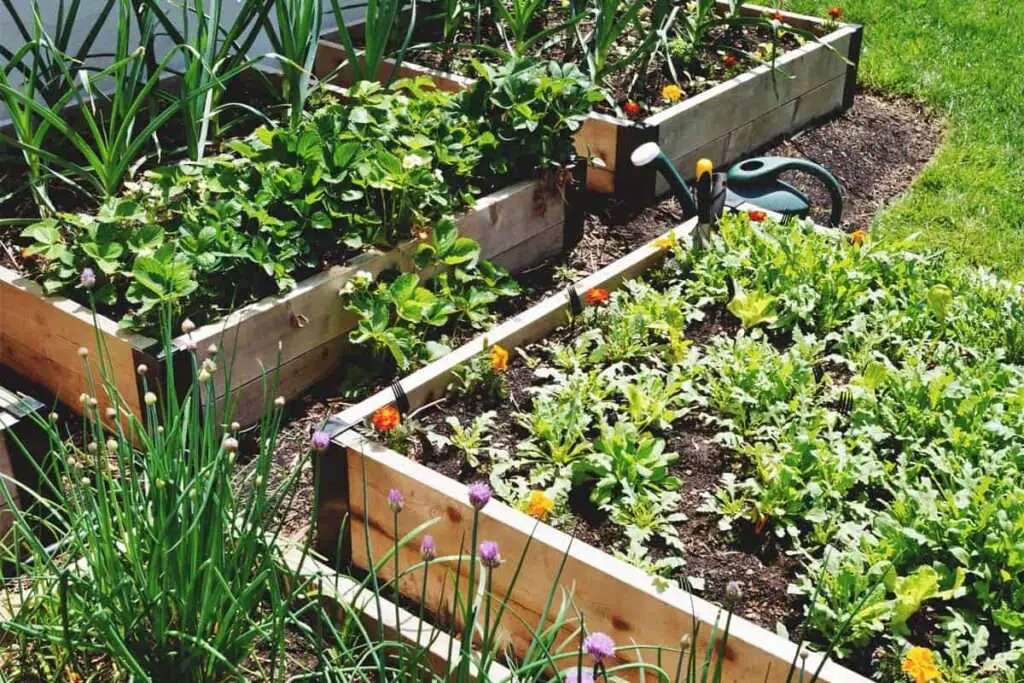
Choosing the Right Soil for Good Drainage
Understanding Soil Types
To ensure proper drainage in your raised garden beds, it is important to understand different soil types and their characteristics. Sandy soil drains quickly due to its larger particle size, while clay soil retains water due to its smaller particles. Loam soil is often considered ideal for gardening as it provides a good balance of drainage and water retention. By understanding the soil types in your garden beds, you can make informed decisions regarding soil amendments and drainage improvements.
Selecting Well-Draining Soil Mix
When filling your raised garden beds, selecting a well-draining soil mix is crucial for proper drainage. Opt for a mix that includes components such as perlite, vermiculite, or coarse sand, which improve drainage by creating air pockets and preventing compaction. This ensures that excess water can easily drain away, preventing waterlogged soil and maintaining optimal moisture levels for plant growth.
Adding Compost and Organic Matter
In addition to selecting a well-draining soil mix, adding compost and organic matter to your raised garden beds further improves drainage. Compost improves soil structure, allowing for better air circulation and water movement. It also adds beneficial microorganisms that aid in nutrient availability for plants. By incorporating compost and organic matter, you can enhance both the drainage and overall fertility of your raised beds.
Proper Bed Construction for Optimal Drainage
Building Raised Beds with Adequate Drainage
When constructing your raised garden beds, it is important to ensure proper drainage from the start. Instead of using solid bottoms, consider using materials such as landscape fabric or hardware cloth at the bottom of the bed to create a barrier that prevents soil from washing away while allowing excess water to drain out. This ensures that water does not accumulate within the bed, promoting better drainage.
Using Drainage Materials
In addition to incorporating drainage systems, using suitable materials within the raised garden bed can help improve drainage. Layering the bottom of the bed with gravel or small stones facilitates water movement and prevents water from stagnating. This acts as a drainage layer and promotes healthy root growth. Using lightweight materials such as cedar or redwood for bed construction also aids in drainage due to their natural resistance to decay and their ability to allow airflow.
Ensuring Proper Slope
Another aspect of bed construction that affects drainage is ensuring proper slope. Ideally, raised garden beds should have a slight slope of 1-2% to allow water to flow away from the bed. This prevents water from pooling and promotes efficient drainage. By paying attention to bed slope during construction, you can avoid potential waterlogging issues in your raised garden beds.
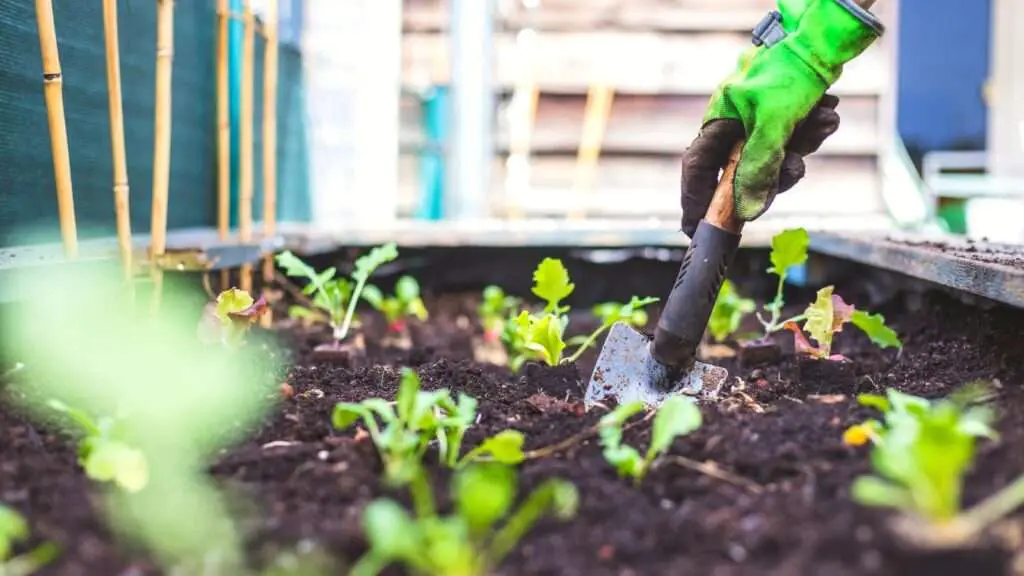
Managing Water Flow in Raised Garden Beds
Watering Techniques for Drainage
Proper watering techniques play a significant role in managing water flow and maintaining good drainage in raised garden beds. It is essential to water deeply and infrequently, allowing the soil to dry out between watering sessions. This prevents overwatering and ensures that excess water can drain away. Avoid consistently wetting the soil surface, as this can lead to compaction and hinder drainage.
Mulching Strategies
Mulching is an effective technique to retain soil moisture and suppress weed growth. However, improper mulching can hinder drainage in raised garden beds. When applying mulch, be careful not to cover the entire surface of the bed, especially near the base of plants. This can create a barrier that prevents water from reaching the soil and inhibits drainage. Instead, leave a gap around the base of plants to allow water to soak into the soil.
Importance of Avoiding Overwatering
Overwatering is a common mistake that gardeners make, often resulting in poor drainage and waterlogged soil. It is important to monitor the moisture levels in your raised garden beds and avoid excessive watering. Stick your finger into the soil near the plant’s root zone to check for moisture. If it feels moist, hold off on watering until the soil dries out slightly. By avoiding overwatering, you can maintain proper drainage and promote healthy plant growth.
Dealing with Common Drainage Issues
Compacted Soil and Poor Drainage
Compacted soil is a common issue that can deteriorate drainage in raised garden beds. It occurs when the soil particles become densely packed, restricting airflow and preventing water from percolating through the soil. To address compacted soil, you can use a garden fork or a broadfork to aerate the soil, creating channels for water to drain and roots to penetrate. Breaking up compacted soil improves drainage and promotes a healthy growing environment for your plants.
Identifying Drainage Problems
Identifying drainage problems in your raised garden beds is crucial for implementing appropriate solutions. Common signs of poor drainage include standing water on the surface of the soil, slow plant growth, yellowing or wilting leaves, and the presence of mold or fungus. Regularly inspecting your garden beds and monitoring plant health can help you identify any drainage issues early on and take corrective actions promptly.
Solutions for Improving Drainage
Once you have identified drainage problems, there are several solutions you can implement to improve the situation. For minor issues, adjusting watering practices and incorporating organic matter into the soil can help in the short term. If the problem persists, you may need to amend the soil by adding sand or perlite to improve drainage. Installing additional drainage systems such as French drains or drainage pipes may also be necessary for more severe drainage issues. Tailoring the solution to the specific problem will help restore proper drainage in your raised garden beds.
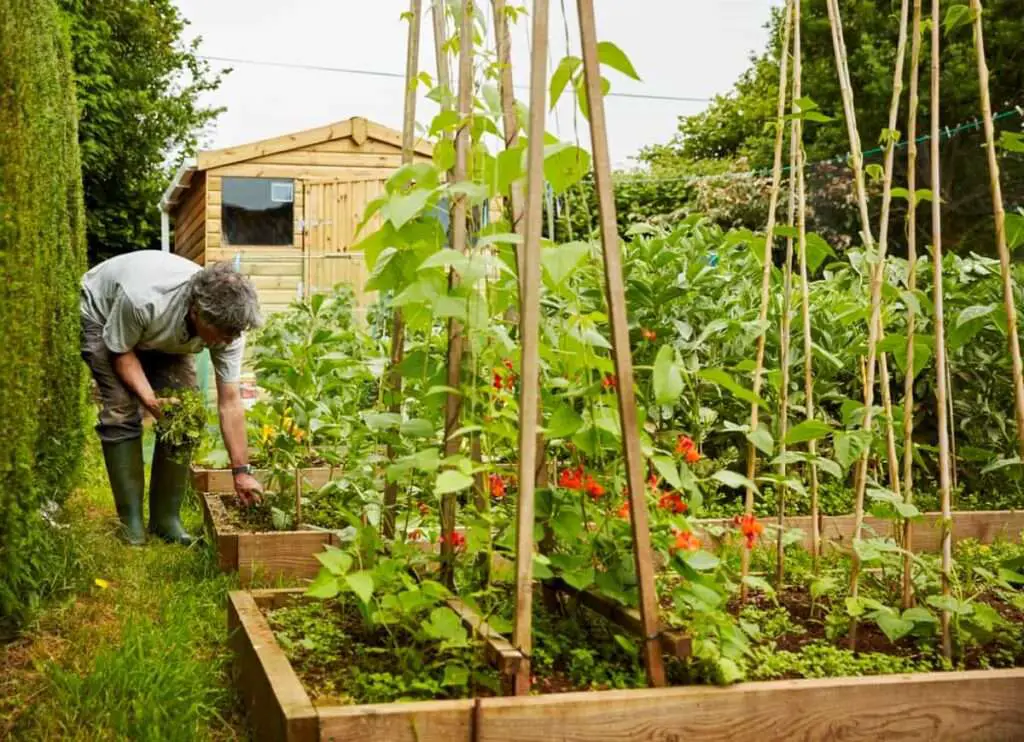
Raised Garden Bed Maintenance for Drainage
Regular Inspections and Cleaning
Regularly inspecting your raised garden beds is an integral part of maintenance for proper drainage. Check for any signs of soil erosion, clogging, or blockages in drainage systems. Remove any debris, fallen leaves, or plant material that can obstruct water flow. By keeping your raised beds clean and free of obstructions, you can ensure optimal drainage and reduce the risk of drainage-related issues.
Trimming and Pruning for Airflow
Proper airflow is essential for maintaining healthy plant growth and preventing excessive moisture in raised garden beds. Regularly trim and prune plants to promote airflow, especially around the base and lower foliage. This allows for better air circulation, reducing the risk of fungal diseases and improving drainage. Proper pruning techniques can also prevent vegetation blockage that may hinder water movement within the raised beds.
Preventing Vegetation Blockage
In addition to regular trimming and pruning, preventing vegetation blockage is essential for maintaining proper drainage. Plants with dense foliage or trailing vines can obstruct water flow and cause water to pool in certain areas. Proper spacing between plants and pruning back excessive growth can prevent vegetation blockage and ensure uniform water distribution. Maintaining a balance between plant growth and drainage is crucial for the long-term health of your raised garden beds.
Tips for Maximizing Drainage in Raised Garden Beds
Choosing the Right Location for Beds
Selecting an appropriate location for your raised garden beds is the first step in maximizing drainage. Choose a spot that receives ample sunlight and is free from any obstructions that may obstruct airflow or cause water to accumulate. Avoid low-lying areas or locations prone to flooding, as these can hinder drainage and create unfavorable growing conditions.
Using Raised Beds with Adequate Depth
The depth of your raised garden beds is an important aspect to consider when aiming for optimal drainage. Beds that are too shallow may not provide enough space for proper root growth and limit drainage capabilities. On the other hand, beds that are too deep may lead to excessive drainage and dry out the soil too quickly. A depth of 12-18 inches is generally recommended for raised garden beds, providing a good balance for both plant growth and drainage.
Avoiding Excessive Watering
Overwatering is a common mistake that gardeners make, and it can have a detrimental impact on drainage in raised garden beds. Avoid excessive watering by monitoring soil moisture levels and watering only when necessary. Stick to a watering schedule that promotes deep root growth while allowing the soil to dry out slightly between waterings. By avoiding excessive watering, you can maintain proper drainage and prevent waterlogging issues.
Benefits of Proper Drainage in Raised Garden Beds
Improved Plant Health and Growth
Proper drainage in raised garden beds promotes improved plant health and growth. By allowing excess water to drain away, you prevent waterlogged soil that can suffocate roots and promote disease. Plants in well-drained beds have access to oxygen, nutrients, and water in optimal amounts, leading to healthier root systems and overall plant vitality.
Minimizing Soil Erosion
Good drainage helps minimize soil erosion in raised garden beds. When excess water is effectively drained, it does not wash away valuable topsoil or cause soil erosion. This is particularly important in areas with sloping terrain or heavy rainfall, where proper drainage plays a crucial role in retaining soil integrity and preventing erosion. By maintaining proper drainage, you can preserve the quality and structure of your garden soil.
Preventing Waterlogging Damage
Waterlogged soil can cause significant damage to plants and impact their overall performance. By ensuring proper drainage, you prevent damage caused by waterlogging, such as root rot, stunted growth, and decreased yield. Well-drained raised garden beds provide plants with the optimal balance of moisture, allowing them to thrive and reach their full potential.
Common Mistakes to Avoid in Raised Garden Bed Drainage
Neglecting Drainage Planning
One common mistake when constructing raised garden beds is neglecting proper drainage planning. Failing to consider drainage from the start can lead to waterlogged soil and plant health issues. It is essential to take into account bed construction, soil composition, and drainage systems during the planning stage to ensure adequate drainage in your raised garden beds.
Using Inadequate Bed Construction Materials
Using improper bed construction materials can also hinder proper drainage in raised garden beds. Solid bottoms or materials that do not allow water to flow through, such as plastic or untreated wood, can cause water to accumulate and result in poor drainage. It is crucial to choose materials that allow for proper water drainage, such as landscape fabric or hardware cloth, to ensure optimal growing conditions.
Ignoring Warning Signs
Ignoring warning signs of poor drainage in raised garden beds can have long-term consequences for plant health. Common warning signs include standing water, slow plant growth, and the presence of mold or fungus. It is important to address these signs promptly and take appropriate measures to improve drainage. Regular observation and maintenance are key to preventing drainage issues from escalating.
Importance of Regular Maintenance for Drainage
Preventing Clogs and Blockages
Regular maintenance is vital to prevent clogs and blockages that can hinder proper drainage in raised garden beds. Clearing debris, fallen leaves, or plant material from drainage systems ensures uninterrupted water flow. Regularly inspecting and cleaning your raised beds helps maintain optimal drainage and reduces the risk of drainage-related issues.
Promoting Longevity of Garden Beds
Proper maintenance of raised garden beds promotes their longevity. By ensuring proper drainage and addressing any issues promptly, you can prevent deterioration and prolong the lifespan of your garden beds. Regular inspections, cleaning, and necessary repairs help maintain the structural integrity and functionality of your raised beds.
Avoiding Costly Repairs
Neglecting drainage maintenance can lead to costly repairs in the long run. Issues such as soil erosion, root rot, or water damage can require extensive remediation and replacement of materials. By regularly maintaining proper drainage, you can avoid expensive repairs and ensure the long-term success of your raised garden beds.
Environmental Considerations for Drainage in Raised Garden Beds
Minimizing Runoff and Water Waste
Proper drainage in raised garden beds helps minimize runoff and water waste. When water is effectively drained, it does not pool on the surface or runoff into surrounding areas. This reduces the risk of soil erosion, conserves water resources, and minimizes the impact on the local ecosystem. By managing drainage effectively, you contribute to environmental sustainability and responsible gardening practices.
Using Eco-friendly Drainage Techniques
Incorporating eco-friendly drainage techniques further enhances the environmental aspect of raised garden bed drainage. For instance, using natural materials such as gravel or untreated wood for drainage systems reduces the use of synthetic materials that may have negative environmental impacts. Additionally, incorporating organic matter into the soil promotes soil health and reduces the need for chemical fertilizers or pesticides.
Choosing Sustainable Drainage Materials
Choosing sustainable drainage materials is important for minimizing the environmental impact of raised garden beds. Opt for materials that are renewable, locally sourced, and have a low carbon footprint. Using recycled materials or repurposing existing materials for drainage systems can also contribute to sustainability efforts. By considering the environmental aspects of drainage materials, you can create a more environmentally friendly garden.
Conclusion
Ensuring proper drainage in raised garden beds is essential for promoting healthy plant growth and successful gardening. By preventing waterlogged soil, promoting healthy root growth, and preventing disease and root rot, proper drainage provides the optimal conditions for plants to thrive. Factors such as soil composition, bed construction, and bed height impact drainage capabilities. Conducting percolation tests, amending soil, and installing drainage systems can improve drainage in raised garden beds. Choosing the right soil mix, constructing beds with adequate drainage, and managing water flow are crucial for maximizing drainage. Regular maintenance, proper watering techniques, and avoiding common mistakes contribute to long-term success. Ultimately, proper drainage in raised garden beds ensures healthy plant growth, minimizes soil erosion, and prevents waterlogging damage, leading to a rewarding gardening experience.

